1954 Commer Superpoise breakdown lorry
Posted by Chris Graham on 20th April 2022
Keith Laming’s prize-winning, 1954 Commer Superpoise breakdown lorry looks set to be a show star this year. Peter Simpson tells the story.
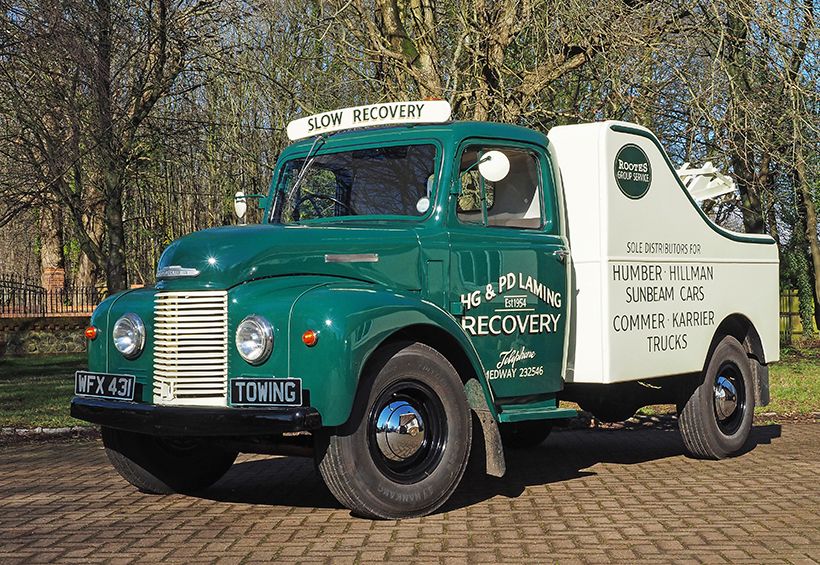
Keith Laming’s newly-restored 1954 Commer Superpoise breakdown lorry.
“It’s a bit too new for me really.” That was Kent-based Keith Laming’s possibly-surprising initial reaction when a schoolfriend, whose daughter’s wedding Keith had just arranged transport for, told him about a 1954 Commer Superpoise recovery lorry, complete with hand-operated crane, that had recently been pushed out of a barn a few miles down the road.
You see, 65-year-old Keith’s real automotive interest is cars from the 1920s – Austin 16s in particular. He currently owns seven pre-war cars, plus three motorcycles, and when offered the Commer was part-way through another major project. But while he did politely decline to buy at this point, he did “strongly recommend” that the Commer was covered up to prevent further deterioration.

As found in a Kent field, shortly before purchase by Keith.
Over the next decade, Keith did, however, keep a sort-of discreet eye on the old Commer and was disappointed that his cover-it-up advice wasn’t taken, and it deteriorated as a consequence. Eventually, and nearly 10 years after he was made aware of the lorry’s existence, he decided that something had to be done, and with no personal project on the go at that point, Keith, in his own words “did a deal” and the Commer was transported the short distance back to his base.
It’s a mystery…
Very little history of WFX 431 is known. It was suggested to Keith that the lorry might have belonged to Caffyns (the well-known Kent and Sussex-based dealership group) at some time, but that is totally unconfirmed. The registration number is, unfortunately, of little use as though WFX is a Dorset number, it was used only after 1974 for re-registration purposes. This vehicle, though ‘declared manufactured 1954’ was actually registered as WFX 431 in 1983.
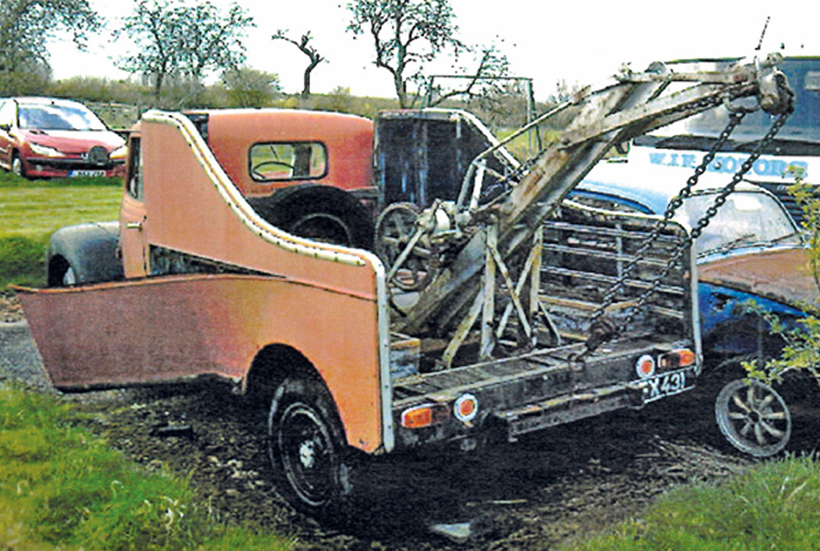
Chariot-type body was clearly in need of attention – it ended up being renewed, though the aluminium covering was reused.
This may indicate armed services ownership, use overseas, or that it missed the DVLA’s original deadline for re-registration under its original number and had to accept a non-original age-related mark instead. It’s also possible that, as a breakdown lorry, the Commer was operated on trade plates (as was permitted until 1988) and the registration was allocated when it was sold into private preservation.
So several possible scenarios and Keith would be very interested in hearing from anyone who can shed any light on the past life of this particular Commer. As, come to that, would we at CVC! Further clues are the 1989-expiring tax disc in the windscreen which seems to suggest a previous life in preservation, and evidence which emerged during the restoration that the extremely low recorded mileage of a little over 13,000 could be correct.
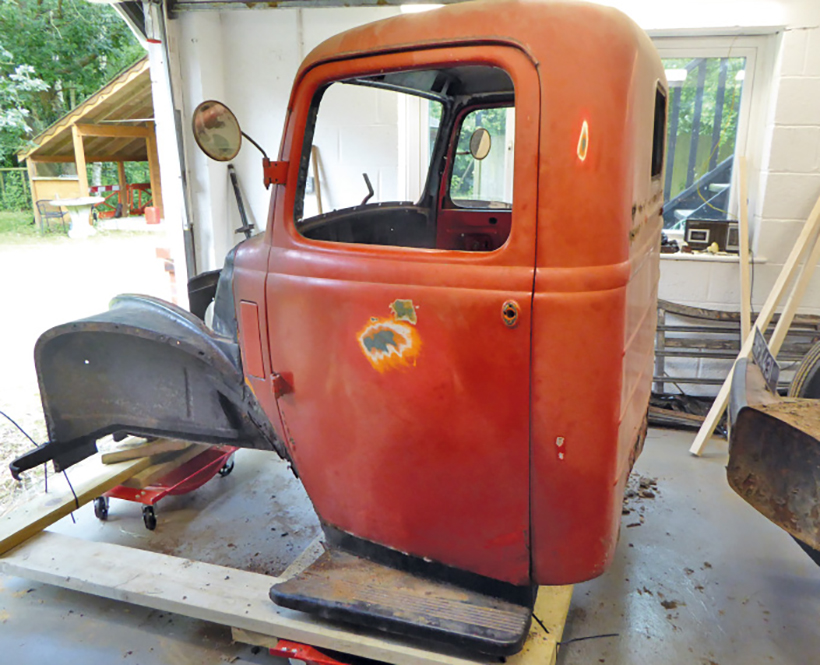
Cab removed. Despite the time spent exposed to the elements, this was in pretty good overall condition and needed mainly localised repairs.
Back to the restoration. A week after the Commer had arrived safely at Keith’s home, the previous owner turned up with the keys, and a can of petrol. A battery was connected, fuel added to the carburettor float chamber, the key turned and the starter button pressed… It started straightaway, and ran fine until the carburettor ran out of fuel.
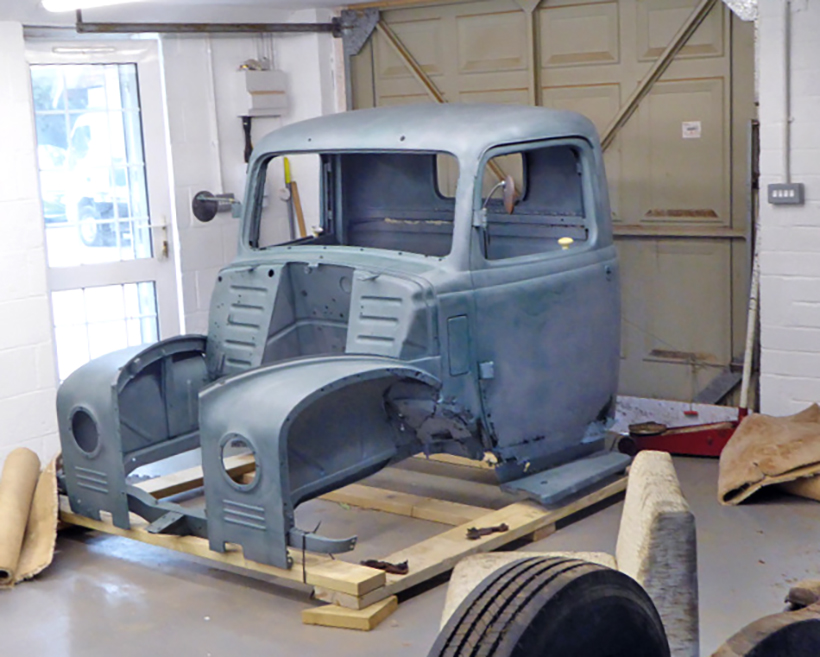
Cab repaired and in primer. Colour coats were applied professionally due to need for two-pack spraying and extraction facilities.
However, before work on the restoration proper could begin, something else was needed. The Commer was slightly too tall for Keith’s existing garage/workshop, and in any case this was full of other completed projects. The solution, though, was simple enough; build another, bigger workshop! To be fair, having spent his working life in the building/construction trade (mainly as a carpenter and roofer) Keith was probably in a better position than most to do this. This was, however, to be no basic structure; the accommodation Keith created is a bit special with facilities including LED lighting and a full central heating system as well as plenty of room for taking things apart.
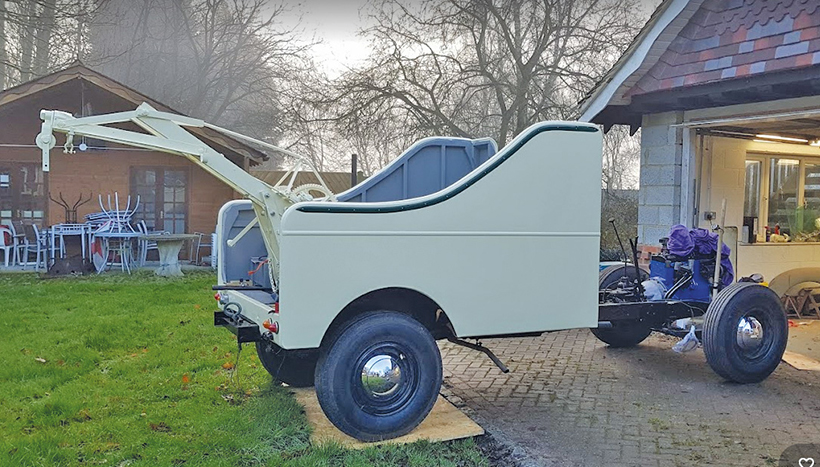
New body in place, starting to come back together, and a glance inside Keith’s truly superb centrally-heated workshop.
The restoration
And taking things apart started pretty-much as soon as the workshop was completed. At this point I need to bring another name into the story. Bob Kellar is a long-term friend of Keith’s, and a retired chap who spends “Every Monday at least” helping out with various restoration projects.
Anyway, Keith and Bob stripped everything off the chassis which was then blasted. As usual and expected, the cab needed some repairs including new sections let into the wings, steps, door bottoms and the bottom-half of the cab’s back panel. This work was undertaken on site by a contact named Sheldon who, apparently, used an old fire extinguisher body as his main dolly! One common cab-metalwork repair wasn’t, however, needed – the Commer has a wooden cab floor.

The cab back from painters, and about to go back on.
On the mechanical side, the engine was stripped but found to be in excellent internal condition with no bore wear at all, and even the bearing shells could be reused; the only replacement parts needed were gaskets and an oil filter, though the valves were removed, cleaned up and reground. Similarly, the clutch, gearbox, rear axle, steering and suspension components all seemed in excellent condition, and it was this that made Keith and Bob suspect that the 13,000 miles shown on the speedometer were, indeed, correct.
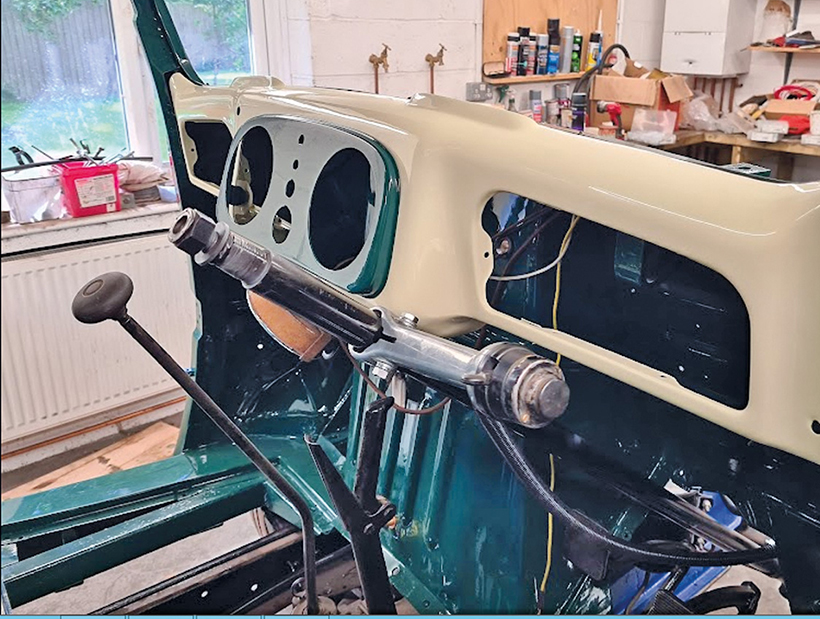
Cab interior coming together. Most of what can be seen here is original material refurbished.
A complete new set of steering joints was bought, but as the originals turned out to be in perfect condition they were never fitted and still sit on a shelf for use later. The radiator was rebuilt locally, along with the water pump.
The brakes were, of course, fully overhauled with new pipes and cylinders, and the shoes were relined; it is a purely hydraulic system. Keith was pleasantly surprised by how easy it was to get parts for the Commer; but then again Keith and co are experienced restorers and used to dealing with vehicles where a lot has to be made from scratch. Sussex-based Rootes specialists Speedy Spares were able to supply a lot of what was needed; the rest came from specialist suppliers online.
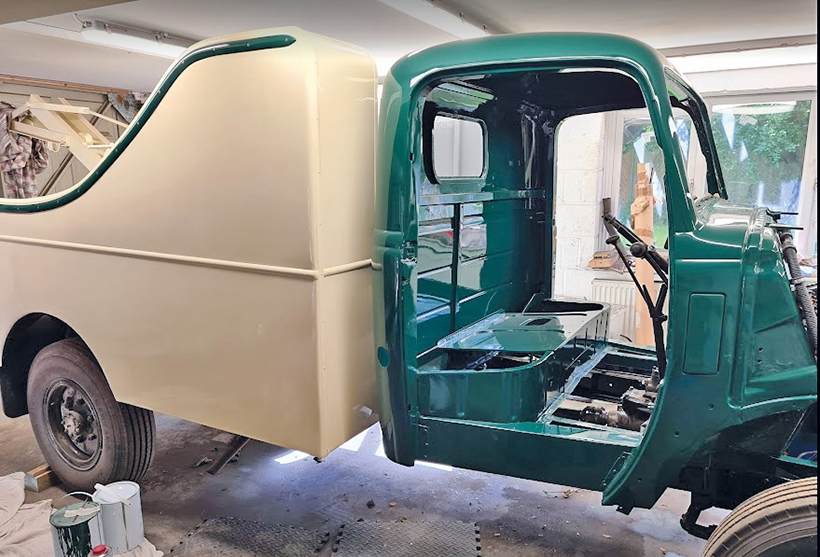
Final fit-up underway; the time and trouble taken at this stage is certainly reflected in the quality of the finished lorry.
The original wiring loom was, however, a “complete mess” due to a combination of age-related deterioration and having been cut about in several places. Keith and Bob got hold of a wiring diagram and using this, along with the remains of the original, made up their own original-pattern replacement. The dynamo and starter motor were both rebuilt by South East Auto Electricians of Maidstone, and new lights were fitted all round. All the lights were renewed too, but the original instruments were reused, with the exception of the temperature gauge which was either missing or, possibly, had never actually been fitted; such things were often an optional extra on early-fifties vehicles. In this case however Keith found a new-old-stock original-pattern gauge, complete with its capillary tube, online, and this went straight in and now looks like it’s always been there.
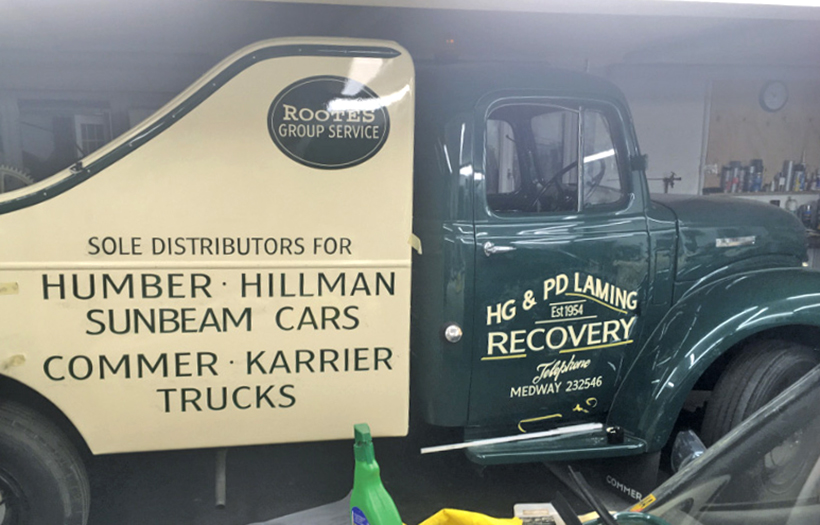
Sign-writing properly and professionally applied in the traditional way – no vinyls here!
Body bother
So far, all things considered, the restoration had been able to retain most of the original material, but the chariot-style breakdown lorry body was another story. Here, the long-term outside storage had really taken its toll and the body was, basically, beyond any viable repair. Keith therefore used his woodworking skills to build a complete new one from scratch.
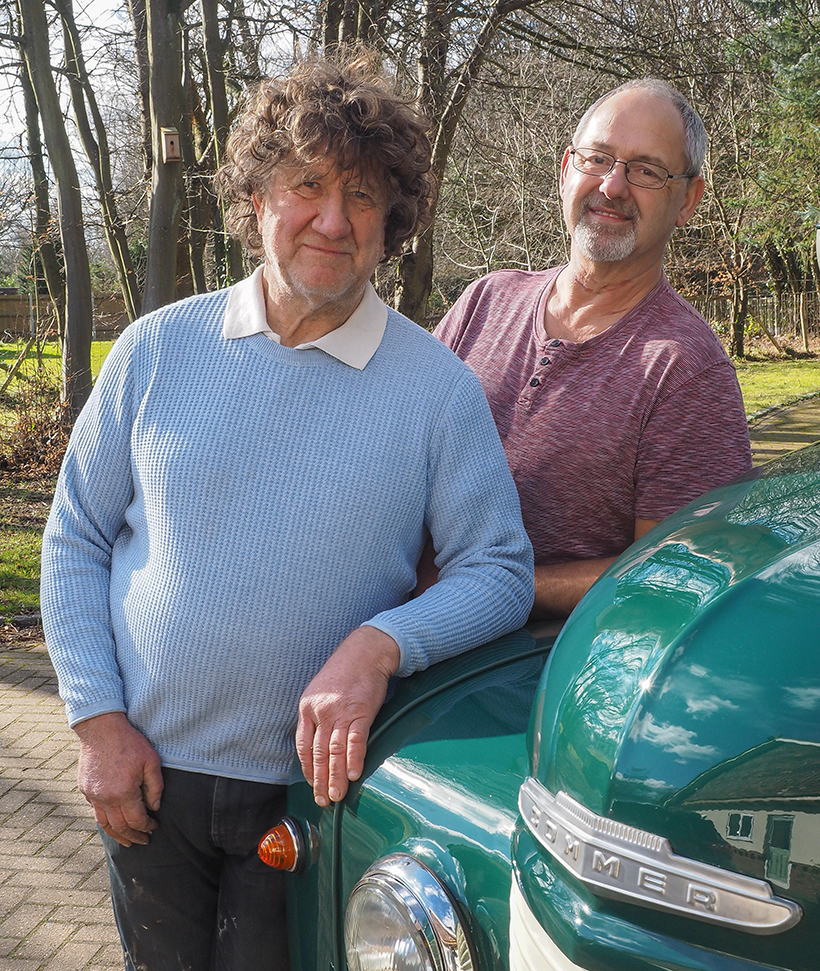
Keith Laming (left) and Bob Kellar, the key players in this story.
The original aluminium top side sections have, however, been retained and transferred. The original crane mounting to the chassis was, in Keith’s words, “diabolical” and needed redesigning and remaking, a process which also meant the body floor had to be revamped.
The crane itself was dismantled, the component parts shot-blasted, and replacements for some broken and/or worn parts were turned-up on a lathe by friend Barry Ledell. This included making handles which are an exact match for the originals. The original chain was cleaned up, inspected and, crucially, tested by specialists JH Lifting of Sittingbourne, and like the rest of the mechanicals, was in surprisingly good condition.

Four-cylinder engine is a slightly detuned version of the contemporary Humber Hawk unit.
The paintwork (two-pack) was done by two more friends; Bernie and Jackie at Chatham-based Luton Coachworks, with the body and cab each being taken there separately. They were painted as background jobs in between more urgent crash-repair work, and the results are excellent. Back at base, everything was bolted back together, where Nick Pollard was responsible for the superb sign-writing. The ‘Laming’ Rootes dealership is totally fictitious – HG and PD Laming being Keith’s father (Howard George) and mother (Peggy Daphne) respectively.
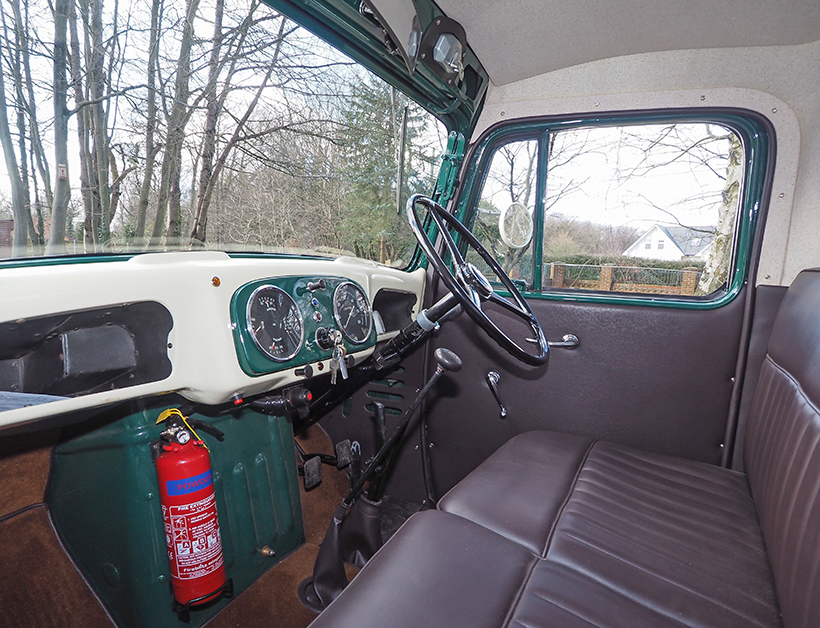
The decision to finish the lorry as a 1950s Rootes dealership vehicle is probably best-explained by Keith himself: “I hate shopping, so whenever we go to Bluewater, my fiancé buys me the latest Classic & Vintage Commercials before sitting me in the café while she goes to the shops. On one occasion she instead bought me a copy of Kelsey Media’s Vintage Roadscene Archive; the one on Commer and Karrier. This included a feature on Rootes recovery vehicles, one of which was a Commer exactly like mine. I absolutely loved the look of it, and at that point decided it was the finish I wanted, so I had the Rootes branding copied.”

All tyres were, of course, renewed for safety reasons; Keith was anticipating a spot of difficulty with sourcing tyres for the Commer’s split-rim wheels, but in the event local commercial vehicle tyre specialist A2 Tyres had a set in stock as they are also used on some modern heavy plant trailers.
The cab interior is, as was entirely usual at the time, pretty basic, but a trimming contact Lee made a period style cloth headlining and fitted this in place of the hardboard original. Besides looking better this, and the carpet floor covering, also reduce cab noise-levels on longer runs; as a working breakdown lorry the Commer probably wouldn’t have been driven more than 20 miles or so at a time, but on preservation-type road runs it will go further.
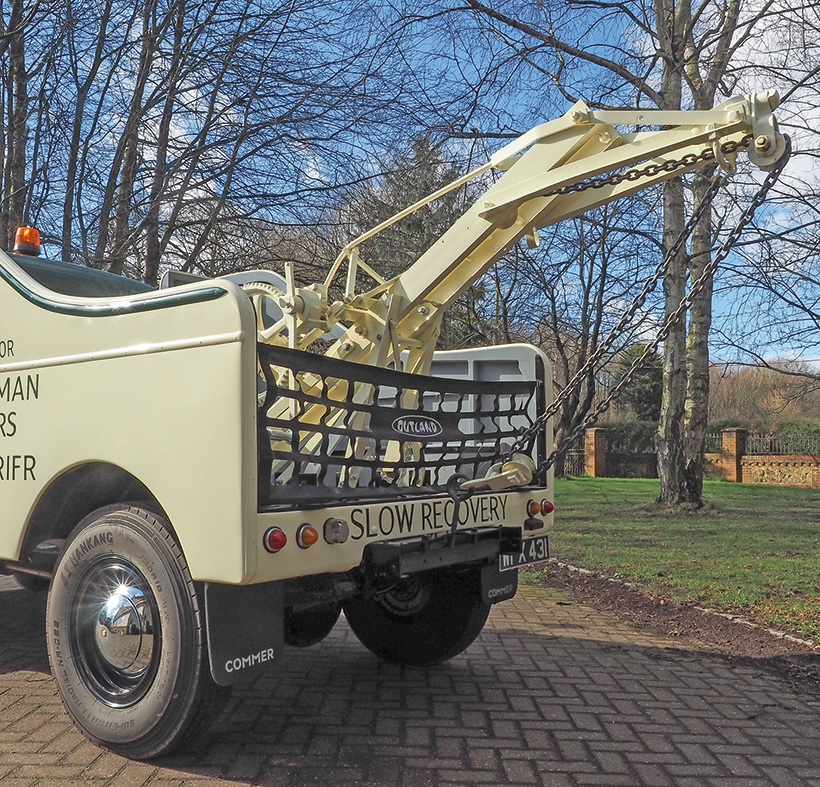
The project was finally finished in early 2020, after 2½ years. The target was to have the lorry ready for that year’s HCVS London to Brighton Run, but as we all know that was cancelled, along with the 2021 event. However the 2021 HCVS Sprat & Winkle Sevenoaks to Hastings event did go ahead. At Hastings, it won both the Editor’s choice and Best in Show awards, and we’ve a feeling these will be only the first of many accolades and awards which it will receive over the next few months and years.
Conclusions
Back in the 1950s and 1960s, vehicles of this kind were owned and operated by every half-decent garage in the country. Often, ‘the crane’ would be parked up at the back of the workshop, and it might spend weeks at a time there not being used. It would, however, always be maintained in readiness for action so that if a customer did break down, it could be fired up instantly – possibly with a little help from a booster box – and then be driven out immediately to do whatever was needed.
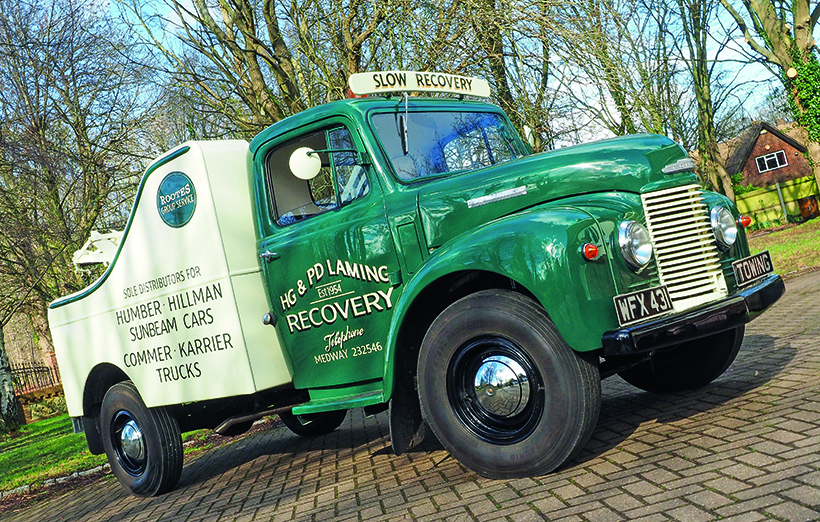
What we have here is a reminder of those days when rather than calling out a specialist, garages by and large did all their own recovery work, and ‘the crane’ was often seen not only as a piece of equipment, but something to take a pride in. If it looked scruffy, potential customers might be put off. If, though, it was clearly cherished and cared-for vehicle, customers and potential customers would probably be impressed and believe that similar care would be taken of their own vehicle. Subliminal advertising is by no means a new concept…
This is from the latest issue of Classic & Vintage Commercials magazine, and you can get a brillinat, money-saving subscription to it simply by clicking HERE





